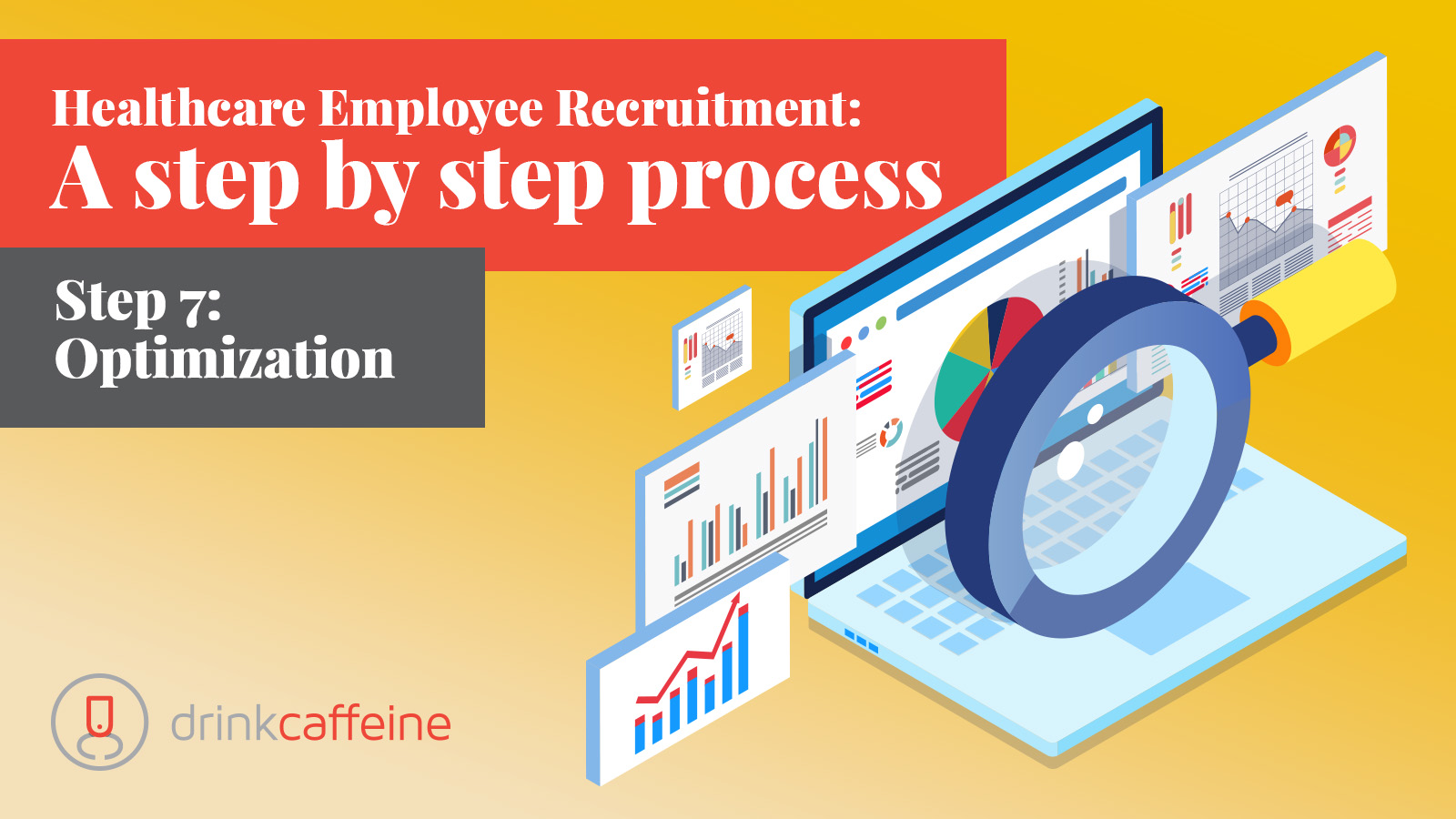Your recruitment program is in place. Now it’s time to sharpen your focus and optimize your impact.
Metrics will tell you how your recruitment program is working, but it’s necessary to use the right measurements to get a clear view of performance. Here’s a summary of the metrics you can use to evaluate the success of your efforts.
In Step 7 we look at optimizing content performance.
Optimization: Achieving the greatest ROI for your recruitment program
Marketing – especially digital marketing – is itself a form of research; the data that it yields helps to inform and guide your next actions.
As your recruitment program enters the marketplace and is engaged by your various Personas, you will learn what content, messages, and media they are interested in, and how to strengthen and focus your outreach for optimal effect. Here are some of the most significant metrics to consider for employee recruitment.
High-Value Metrics
Applications completed
A completed job application indicates a high level of value and interest for a potential employee – but you can assume it means you are on a “short list” of 3-5 potential employers. Track completed applications (online and in person) on a monthly basis.
Cost per applicant
Divide your recruitment spending (including all related costs: internal time spent, external costs, media costs, etc) by the number of actual applicants it produces, and you’ll arrive at a preliminary number of what the cost is per applicant. Use it as a benchmark.
Form completion
One of the stronger standards we use to judge healthcare recruitment efforts is completion of a contact form – name, email address, phone, zip code.
Evidence shows that form completion is evidence of a higher level of engagement than, say, clicking on a job description. Keep monthly track of form completion and chart the results month on month and quarter on quarter.
NOTE: There are many metrics for evaluating recruitment, such as time to hire, candidate qualifications, retention, quality of hire, and others. Our focus in this blog is on the metrics directed related to outreach.
Mid-Value Metrics
Moving from “Awareness” to “Interest”
Picture a “sales” funnel, with Awareness at the top, Interest in the middle, Consideration as the funnel gets smaller, and Decision at its most narrow point.
Marketing is largely focused on the first 3 stages – building Awareness of your brand as an employer, attracting Interest, and moving the target into active Consideration. This is where our focus should be. [Hiring “Decisions” are driven by salary/benefits, schedules, and other factors that Marketing cannot control).
To measure Interest, you will need to examine specific actions that indicate the desire to go deeper in the funnel. Some examples: Clicking on an ad. Clicking on a job description. Commenting on a social post or video. Asking questions about your reputation in social media. Time spent on your website and the pages viewed while there. And so forth.
Content Engagement
This category includes
- Ad click-through-rate (CTR). The number of actions taken on digital ads.
- Social Media Engagement. Shares, likes, comments, and CTR to your website/landing page where further information is available.
- Video views. Assuming video is part of your program, you can monitor the number of views, the types of video most watched, and the percentage of videos watched partially vs completely.
Other Metrics
There are many other ways to evaluate your recruitment program that may be qualitative or quantitative. For consideration:
- Diversity. Are your efforts producing a diverse pool of potential employees? If not, consider adjusting the people featured in your content and the messages you send to diverse audiences.
- Source of leads. Look at the point from which your targets initiate their search. It could be a job board, a search firm (more common among M.D. candidates), a social media page, or even an internal hire/promotion. Track these sources over a multi-month period and evaluate them alongside your overall program presence to look for patterns.
- Interview anecdotes. When HR interviews an applicant, one of the standard questions should concern the path the applicant took to get to this point, and the role that marketing outreach played in that journey.
Estimated timeframe for optimization: 2-3 hours/month ongoing
When you’re ready to use data to solve healthcare communications problems, contact us.


